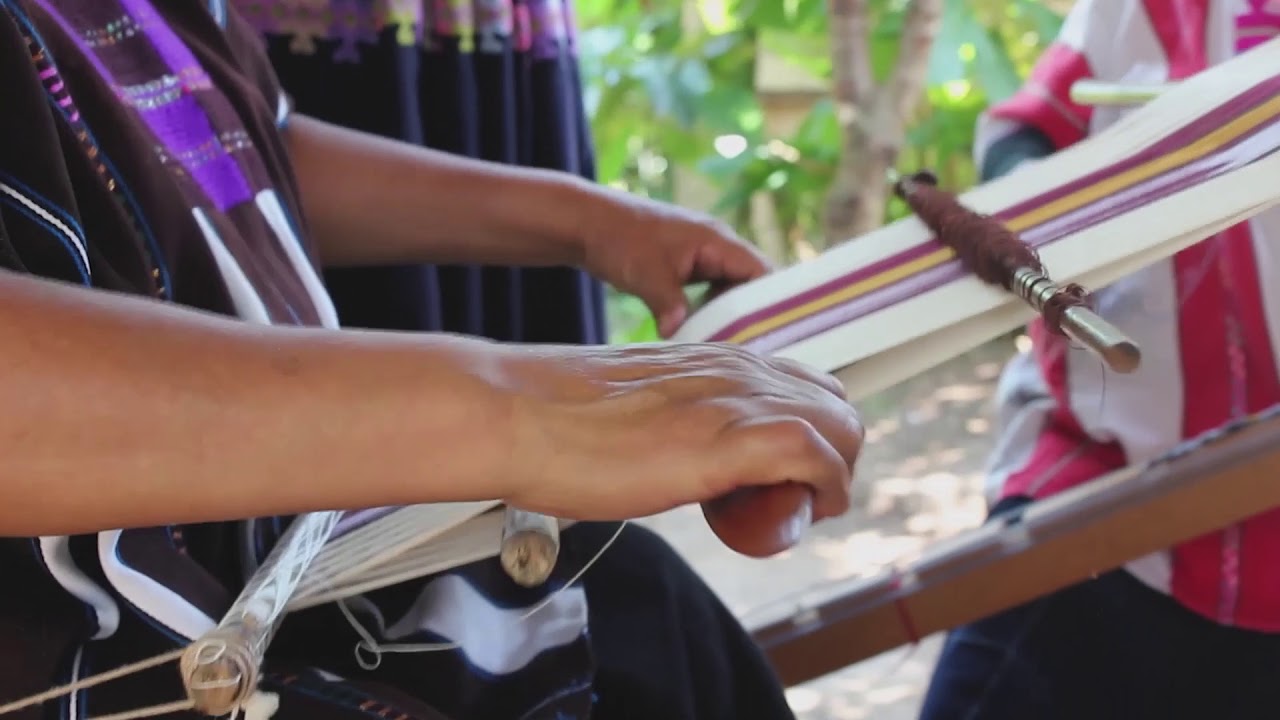The textiles of Mexico represent the cultural diversity of the country.
Cloth fragments discovered and dated from as early as 1800 BC, were made from chichicaste – a plant we know as stinging nettle, which grows easily and yields a great deal of linen-like fibre. All fibres were originally of a vegetable source such as cotton, yucca, palm and other plant fibres, depending on the region.
During the Aztec era, cotton was considered a precious commodity, with only the upper classes allowed to wear cotton garments while the common people continued to wear clothes from the coarser fibre. Cotton was revered and often used as currency.
Fibres were woven on backstrap looms that were worked by women only. Legend has it that Ixchel, the mythical god of the moon, taught the women to create fabrics from fibres and to weave holy designs. The highly regarded ability was such that at the birth of a baby girl, weaving equipment would be gifted to her for future use throughout her life and would be buried with her at the time of her death.
The lady in the photos below is using her back strap loom and can be seen hard at work most days by the lake in Ajijic with her furry companions. The front part of the loom is tied to the tree and the strap, tied around her back, keeps tension on the loom as she weaves a variety of beautiful cloths.
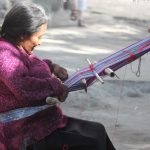
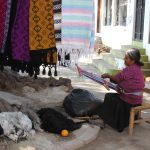
The arrival of the Spaniards brought about changes in the production of cloths and garments. The newcomers did not favour the rougher fabrics, and the backstrap looms could not provide the width of material they preferred. Wool and silk fabrics were brought in from overseas, followed by sheep, silkworms and the European foot pedal looms that were used by men only at that time. By the late 1500s, Mexico became well known for its production of wool and silk woven fabrics. In time, native weavers manufactured enough fabric for export to other countries.
Two examples of foot looms are seen here, one a much larger version than the other, therefore able to produce much wider pieces of cloth. The looms were traditionally operated by men and these days women also work these hefty looms. Note the size of the thread spools!
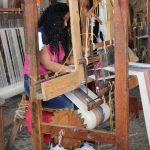
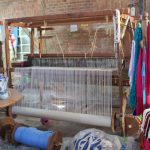
The hand woven textiles were used to create several types of garments as well as items for home and ceremonies. Using natural dyes and with the addition of embroidery, colourful patterns produced by various indigenous groups denoted their individual culture and place of origin. Considering there are in excess of twenty-five million indigenous people in Mexico, making up over 60 indigenous groups, the variety of clothing styles and embellishments are myriad and all are beautiful.
There are many traditional Mexican garments, most very simple in design, that become elaborate with the addition of embroidery, ribbons and other colourful garnishes.
We’ll take a look at just a few here, beginning with the huipil (wee-peel), a basic sleeveless tunic style. Worn short, long or in between by women for hundreds of years, each decorated in the characteristic style of the region and may also denote the marital status of the wearer.
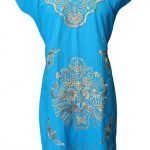

The rebozo is a popular item consisting of a long rectangular woven scarf. A multi functional garment, it is often wrapped around the head and upper body to shade from the sun or to provide warmth on cooler days. Frequently used to carry babies or large parcels, and also as an accessory, particularly those with beautiful long fringes, ribbons or elaborate embroidery.
Mexican skirts are known by many names – including enredo, refajo, chincuete, posahuanco, enagua and many others, depending on which area they are from. Skirts may be worn knee length or more commonly as ankle length. They may be made from cotton, wool, silk or lace, are usually wide, brightly coloured and embroidered with lavish designs.

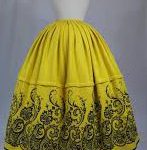

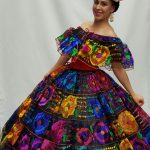

A faja is a long, broad, vibrantly decorated sash approximately 4 inches wide. Commonly wrapped around the waist to hold up a skirt or draw in a huipil. Each one, traditionally, can take as much as a month to make and on occasion are decorated in such a way as to tell the story of the wearer.
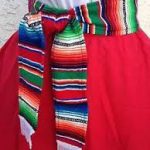
Two other clothing items, the serape and the poncho, traditionally worn by men, were not originally as brightly coloured or decorated as women’s clothing.
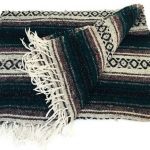

The serape, in its earlier form, was woven from the wool or fleece of the highland sheep, usually black, brown or grey in colour and worn mostly by farmers and shepherds. A long, blanket-like shawl with no openings, it was wrapped around the body to fend of the cold and wet climate of the upland region. Modern day serapes are colourfully striped and not generally used as a main garment, rather as an accessory worn draped over the shoulder.
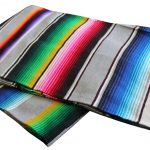
The poncho, initially designed also for the practical function of keeping the wearer warm and dry, is basically a blanket with a hole in the middle for the head. Like the serape, originally woven in dull colours, the modern day version may have the addition of hoods or fringes and be vividly patterned. The poncho has evolved into a garment seen worldwide, be made of various fabric, even plastic and worn by men, women or children as a protective or fashionable clothing item.
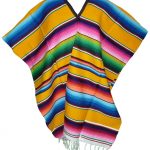
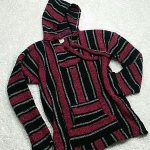
Mexican textiles are used in the making of rugs, hammocks and other household items such as table runners or bedspreads. As well as providing employment, the textiles are an important part of Mexico’s export market.

